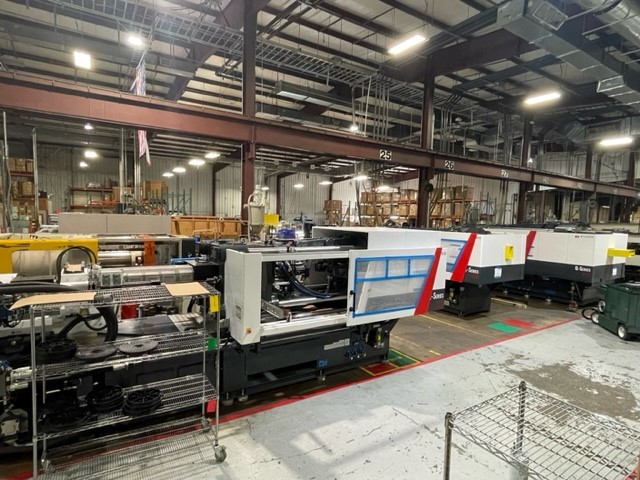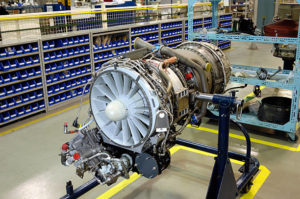Modern injection molding is responsible for creating millions, if not billions, of manufactured plastic items. Although a simple technology in principle, injection molding has a relatively brief history. The story of molding runs almost concurrently with the original development of plastics.
In the early days, plastics were volatile, difficult to work with, and complex to use in manufacturing. But over the years, the technology matured and injection molding became the dominant method of manufacturing consumer products and components for larger assemblies.
Today, modern computer-controlled plastic injection molding is an engineering marvel that continues to deliver new and exciting improvements. So, how did we get here?
Early Plastics and the Origin of Injection Molding
The 19th century was a golden age for experimental chemistry, as new advances and discoveries seemed to arrive at a furious pace. This advance included developing some of the first plastics, which weren’t easy to work with but provided exciting new opportunities. The year 1862 saw the creation of the first plastic material ever, called Parkesine. At the time, there was a keen interest in replacing expensive materials, especially natural ivory, in the face of potential shortages. One of the new synthetic plastics was even called Ivoride, reflecting this desire.
The drive to replace ivory in traditional billiard balls inspired an inventor named John Hyatt to pick up the torch and continue innovations. His version of a plastic, called celluloid, was among the first American plastics. It would dominate the early plastics market — particularly in the film industry, comprising most of the earlier film stock used to make movies. Using celluloid, Hyatt invented a plastic billiard ball, although one that was prone to catching fire or exploding due to the volatile nature of celluloid plastic.
Not until later in the century did serious work occur on ideas surrounding molding plastic into new shapes. Hyatt continued his work alongside his brother, Isaiah, and filed an 1872 patent for the first device recognizable to modern eyes as a method for injection molding. Though their plastic injection molding machine was far from advanced, it was suitable for the mechanized manufacturing of the time. It was popular for creating household items such as durable hair combs.
War Drives Plastics to the Forefront
Plastic development continued into the 20th century, as molded plastics ultimately emerged. In the early 1900s, German scientists created new forms of cellulose-based plastics that were less flammable. By 1919, manufacturers began to use plastic injection presses. Cellulose plastics could regularly undergo a process resembling more modern injection molding operations by the end of the 1930s.
The 1920s and ’30s also saw the birth of many materials that would be among the world’s most popular plastics. For example, polyvinyl chloride, one of the most popular “thermoplastic” materials even today, originated in 1926. The ’30s saw the additional development of more early thermoplastics in laboratory settings. However, it was not until the unfortunate outbreak of war in 1939 that the plastics industry would take its next technological leap forward.
With sources of natural rubber in the Far East all but cut off and synthetic rubbers in their infancy, American manufacturing turned toward plastics to make up for the material shortage. Mass production advancements led to the creation of a more advanced plastic injection molding machine, but many still resembled earlier units. Nonetheless, the ’40s saw plastics enter the mainstream, replacing metals in numerous products. By the war’s end, the country had multiple facilities and material stockpiles for plastics production. The stage was set for something new.
A Revolution in Manufacturing Arrives
Enter American inventor James Watson Hendry, who would redefine and revolutionize injection molding. His first idea was to use a rotating screw-like auger to control the injection process, reducing waste and dramatically improving the speed and efficiency of molding. This mechanism is still the dominant molding machine today. Hendry’s second innovation gave us the method known as gas injection molding. This technology makes creating larger shapes and items with hollow cavities easier, ultimately opening the door to new opportunities for shapes and intricate designs.
From the 1950s onward, molds dominated the world of plastics. Aluminum tooling quickly became the standard. Machines continued to grow larger and more capable of complexity. With the development of American suburbs and a high demand for consumer products, plastics underwent a rapid industrialization process, helping the industry surge to become one of the largest in the United States. It didn’t take long for plastics to become a vital part of the global supply chain, too.
Computers Redefine Plastic Injection Molding
In the late 1970s and ’80s, more powerful computer solutions once again changed the game for molding. The introduction of computer-aided design and manufacturing software (CAD/CAM) gave engineers new options for designing advanced components. These same tools also led to the development of more advanced and capable molding machines than had existed before.
Today, CAD/CAM software still ensures that molds are precise. Computers control the molding machinery to guarantee the best possible results on every run. Even laser-based quality control machinery powered by software plays a role in the process.
Looking to the future, automation and 3D printing will play crucial roles. Additive manufacturing allows for rapid prototyping before mold production, and 3D-printed parts may even be a part of an injection molded assembly. Automation will further streamline quality control, while generative AI tools may one day assist in mold design and validation. With untold innovations on the horizon, the history of injection molding will continue to unfold.




